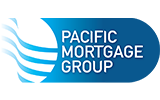How much does it cost to refinance a home loan?
Refinancing a home loan in Australia typically costs between $500 and $2,000, according to our most recent analysis. The exact amount depends on whether you’re staying with the same bank but changing your loan, or moving to a new lender.
If you’re refinancing internally (sticking with your current bank), the fees are often lower than if you’re refinancing externally (switching to a new lender).
Common costs for refinancing include application fees, property valuation fees, legal fees, and exit fees. Some lenders might waive fees or offer incentives, such as cashback deals, to offset refinance costs and encourage you to switch.
Fees for refinancing a mortgage
Exit fee (discharge fee)
$350 - $500
Deregistration/registration fee
$130 - $250 (x 2) depending on your state
Title search fee
$50 - $100
Application fee
$0 - $750
Settlement fee
$100 - $400
Property valuation fee
$50 - $600
You can often negotiate with your new lender to lower or eliminate the upfront costs of your loan. If the lender offers cashback for refinancing with them, it might cover or exceed the costs.
If your new loan requires you to borrow more than 80% of your home’s value, you may need to pay lender’s mortgage insurance (LMI), which can be several thousand dollars.
Banks use different names for refinancing fees. Your bank manager or mortgage broker can explain these costs and help you understand which fees apply to you. This will help you decide when to refinance and if it is worth it.
Can you negotiate refinance fees?
Yes, you can usually negotiate refinance fees. Many lenders are willing to adjust fees or offer incentives to attract new customers and retain existing ones. Here are some ways you can approach it:
Ask about discounts
See if the lender can reduce or waive certain fees, such as application or legal fees.
Leverage competitor offers
Use offers or incentives from other lenders as a bargaining chip to negotiate better terms.
Review cashback deals
Some lenders offer cashback for refinancing with them, which can offset or even cover the costs associated with refinancing.
Ask for a better rate
If there are high refinancing costs, you might be able to save money elsewhere by getting the lender to offer a shaper interest rate.

Sean Callery, Editor of Money
"When I recently refinanced, we had a split loan and our old lender was initially going to charge two discharge fees, as technically we had a fixed and a variable rate loan. I asked nicely and managed to negotiate away one of the discharge fees, saving us $350."
Sean Callery, Editor of Money
Is refinancing worth the cost?
If you refinance to a lower rate, refinancing is usually worth the costs involved in the long run. The lower the rate, the more money you’ll save in interest charges over the loan term.
Additionally, calculate the break-even point - the time it takes to recoup the refinancing costs. If you plan to stay in your home long enough to reach this point, and refinancing aligns with your long-term financial goals, it could be a solid strategy.
For example:
Home loan amount | Current interest rate |
|---|---|
$600,000 | 6.49% |
Home loan amount | Current monthly repayments |
$600,000 | $3,930 |
Home loan amount | Refinance interest rate |
$600,000 | 5.99% |
Home loan amount | New monthly repayments |
$600,000 | $3,741 |
Home loan amount | Monthly savings |
$600,000 | $189 |
Home loan amount | Refinance fees |
$600,000 | $1,000 |
Home loan amount | How long will it take to break even? |
$600,000 | Roughly five months |
| Home loan amount | $600,000 |
|---|---|
Current interest rate | 6.49% |
Current monthly repayments | $3,930 |
Refinance interest rate | 5.99% |
New monthly repayments | $3,741 |
Monthly savings | $189 |
Refinance fees | $1,000 |
How long will it take to break even? | Roughly five months |
Before refinancing, check the current interest rates from different lenders and compare them to your existing rate. Get to know your financial details, like your loan-to-value ratio (LVR) and credit score. Contact your bank and request a better rate. Most lenders will want to keep your business, especially if you have a high loan amount (e.g. above $600,000).







